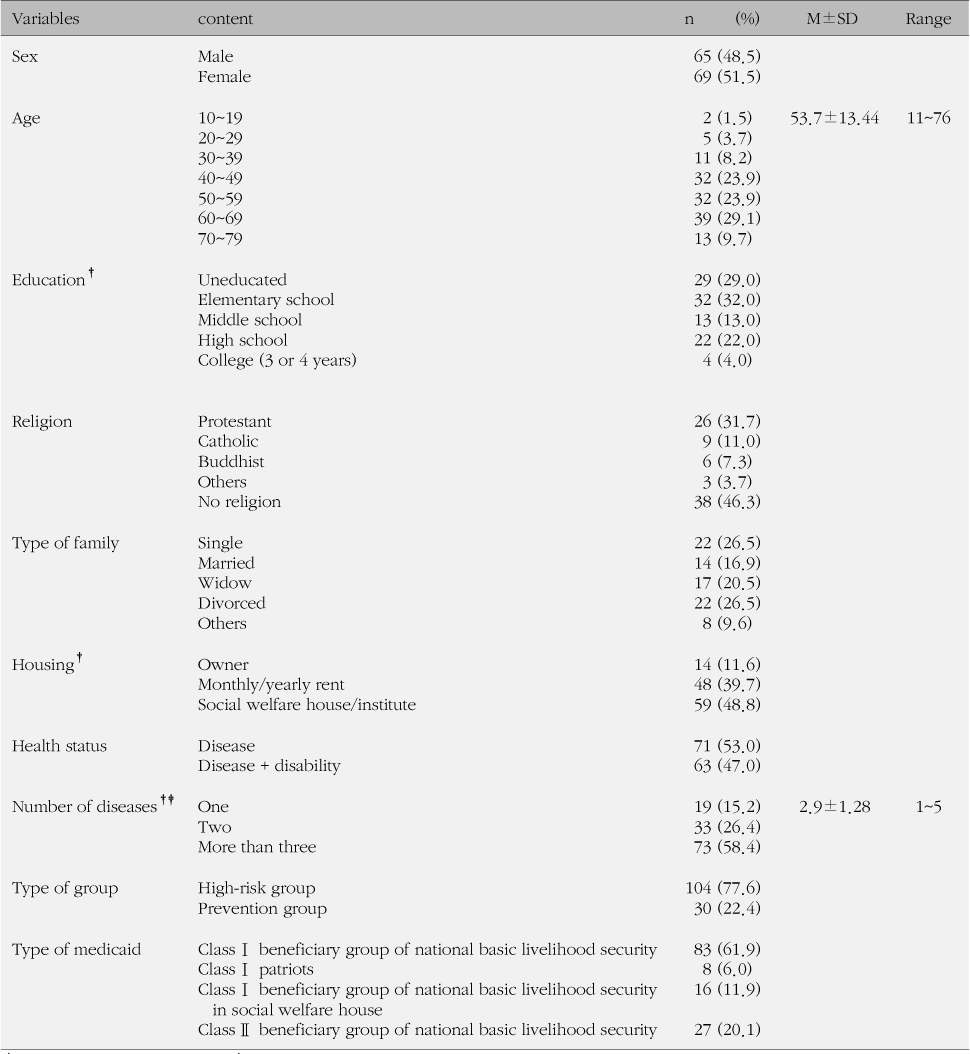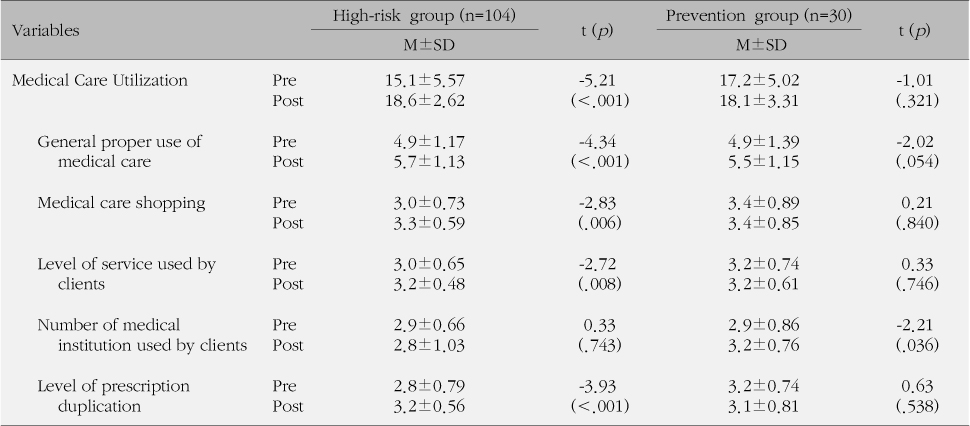Articles
- Page Path
- HOME > J Korean Acad Community Health Nurs > Volume 21(3); 2010 > Article
-
Original Article
- The Effects of Tele-care Case Management Services for Medical Aid Beneficiaries
- Yang Heui Ahn, Eui Sook Kim, Il Sun Ko
-
Journal of Korean Academy of Community Health Nursing 2014;21(3):351-361.
DOI: https://doi.org/10.12799/jkachn.2010.21.3.351
Published online: April 4, 2014
1Professor, Department of Nursing, Wonju College of Medicine, Yonsei University, Korea.
2Emeritus Professor, College of Nursing, Yonsei University, Korea.
3Professor, College of Nursing, Yonsei University, Korea.
• Received: June 27, 2010 • Revised: September 19, 2010 • Accepted: September 20, 2010
© 2013 Korean Academy of Community Health Nursing
This is an Open Access article distributed under the terms of the Creative Commons Attribution Non-Commercial License (http://creativecommons.org/licenses/by-nc/3.0/) which permits unrestricted non-commercial use, distribution, and reproduction in any medium, provided the original work is properly cited.
- 645 Views
- 0 Download
- 4 Crossref
Figure & Data
References
Citations
Citations to this article as recorded by 

- The Effect of Case Management Services for High-risk Medicaid Beneficiaries
Young Jin Ahn, Yun-Kyoung Choi
Journal of the Korea Academia-Industrial cooperation Society.2015; 16(8): 5430. CrossRef - Comparing the Needs of Case Management between Medical Aid Beneficiaries with Simple and Multiple Chronic Diseases
Yang Heui Ahn, Yeonok Suh, Ok Kyung Ham, Hee Kyung Kim
The Korean Journal of Rehabilitation Nursing.2015; 18(2): 98. CrossRef - A study on the Effectiveness of Case Management in Elderly Medicaid Beneficiaries by Geographic Location
Jeong-Hyun Cho, Soon-Ock Kim, Myeong-Kyeong Song, Eun-Shil Yim
Journal of Korean Public Health Nursing.2012; 26(2): 289. CrossRef - Validation of a Needs Assessment Tool for Case Management in Korean Medical Aid Beneficiaries
Yang Heui Ahn, Eui Sook Kim, Ok Kyung Ham, Soo Hyun Kim, Soon Ok Kim, Myung Kyung Song
Journal of Korean Academy of Nursing.2012; 42(4): 549. CrossRef

 KACHN
KACHN





 PubReader
PubReader Cite
Cite

